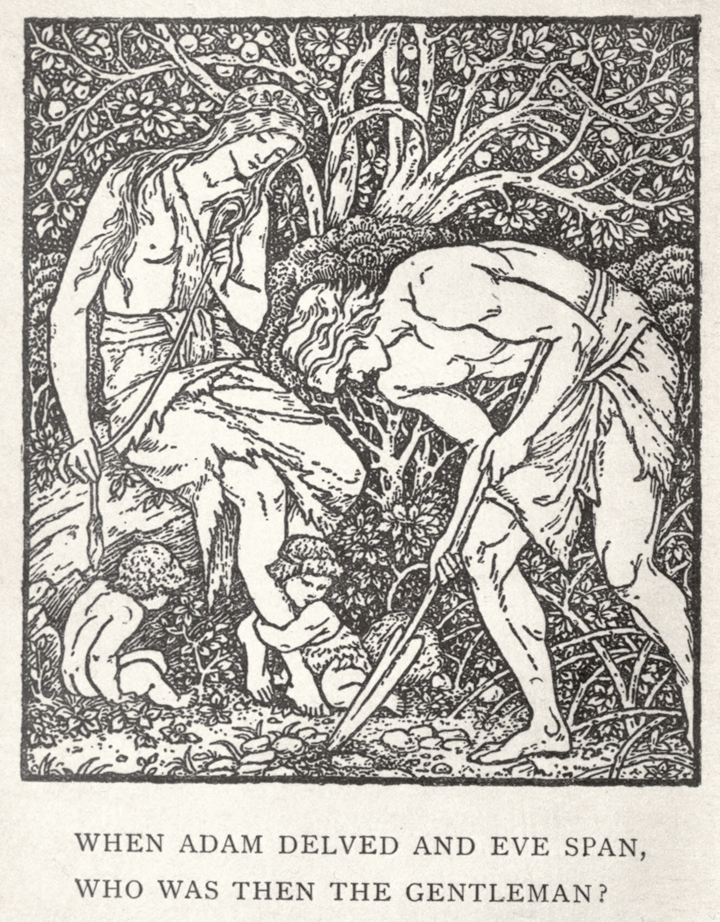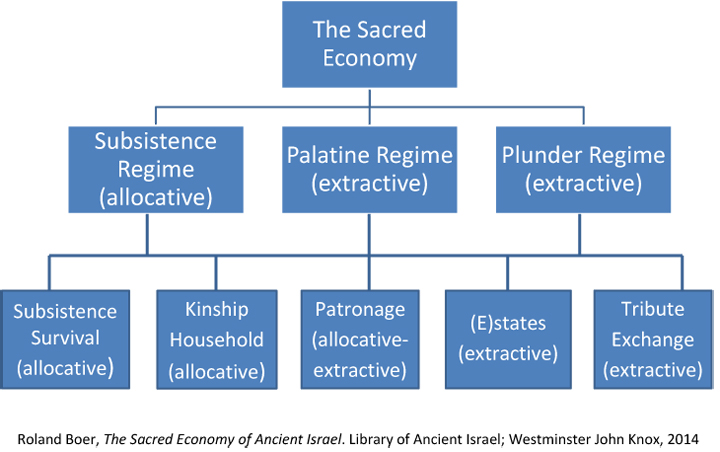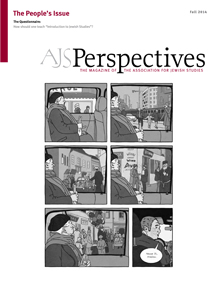
Dialectics
The first is a focus on contradictions and therefore on dialectics. In recent years, Fredric Jameson has emphasized once again the role of dialectics and contradiction in literary analysis. He argues that literary texts are produced in economic and political situations that always face tensions and contradictions. Therefore, texts cannot avoid showing traces of those contradictions. Such traces may appear in the content of the story, perhaps in narrative conflicts, or between characters, or in the plot. But the traces may also be found in the form of the story, whether inconsistencies in the language, or in the conflict of genres, or in anomalies or breaks in the story. The main point is that a Marxist approach to the Bible seeks out the contradictions, wherever they may be found.
As an example, let us consider the text of Genesis 1–3, which is full of contradictions. These include the tensions between the orderly account of creation in Genesis 1 and the earthy account in Genesis 2; a perfect garden that has a flaw in it (the tree of good and evil), which means that the garden is not so perfect; the fact that the serpent actually speaks the truth and God does not (the human beings do not die as a result of eating the tree). But the key tension is between two states of the human beings. On the one hand, they behave like king and queen. They are the highest point and focus of creation. They walk about the garden and can eat from it without any labor. In the evenings they meet and talk with God. On the other hand, when they are expelled from the garden, they are no longer king and queen. They become peasants, with lives full of hard labor, pain, and death.

Mediation
The second point is that the relation between texts and their contexts is always mediated or indirect. Let me put it in terms of reflection and response. A text does not reflect its context; it responds to it. We may think of the text as the answer to a question posed by its social and economic context. The problem is that the answer given is usually unexpected and indirect. The text may try to solve a problem by offering an imagined solution, producing a world that is far from a direct relation to reality.
A more theoretical formulation of this relation between text and context draws upon the work of Louis Althusser, which he develops in relation to ideology: a text is the representation of an imaginary relationship to real conditions of existence. That is, as an item of ideology, a text is not directly related to real conditions. That would require a simple relationship between two items— the text and its context. Instead, Althusser suggests three items: 1) the context or the real conditions, which are the social and economic forces; 2) the imaginary relationship to that context, which is how people conceive of their relationship to the realities of everyday life; 3) the representation of that conception or belief, which is where the text appears. That is, the text is an effort to represent the way people imagine how they fit in the world (this imagined way may be incorrect or correct, although it is usually a mixture of the two). Now Althusser's position becomes even more complex: the way the representation works may be in terms of content—in the words of a story, myth, or poem. It may also appear in indirect ways, in the language, in the structure of a story, or in unexpected traces that we often ignore.
Let us see how this works with the text of Genesis 2–3. I suggest that the story represents the way different groups or classes understood their relationship to agriculture. The Garden of Eden is clearly an agricultural garden, with domesticated plants that are good for food. It also includes animals that the man names, which is an indication of domestication. Above all, it is a garden, a space that God himself has cultivated for human use. However, this is an agricultural space far from reality, for it is an ideal garden or agricultural estate. The first human beings do not need to work, for all the fruits and grains are freely available.
Why tell a story like this? It seems to be an ideal, a dream world without hard labor, without the need to plough the ground, sow seed, deal with pests and disease, harvest a crop, and then turn it into food. But we need to ask a crucial question: for whom is this imaginary garden an ideal? The hint that it may be the ideal of a specific group or class is the end of the story, when the first human beings are expelled from the garden and must work hard for their daily food. But to explore that issue, we need to consider the next point of Marxist analysis of biblical texts.
Expansion
The third feature is what I call expansion, that is, the expansion of analysis beyond the text. A text is always part of a larger reality that includes economics, politics, culture, and ideology. In this way, Marxist analysis challenges the overwhelming tendency of modern interpretation to break human existence into little pieces that seem to have little relationship to one another. A Marxist approach challenges us to think and work in light of a larger whole and to see how the parts belong to that whole. In other words, it dares to think in terms of the big picture and to examine the frameworks we use.
In the case of Genesis 2–3 we need to factor in economic and social factors into our interpretation. This enables us to answer the question I asked earlier: for whom is this agricultural garden an imagined ideal? Does it perhaps represent the hopes of the majority of peasants in the ancient world? They comprised 90percent of the small populations. Living mostly in village communities of between 75 to 150 people, their lives tended to be short (life expectancy was about thirty) and the work of herding animals and growing crops was tough. Yet they had system of living that had stood the test of time. They needed little and developed an economic and social system of life that was strong enough to withstand the difficulties they faced. Would they dream of a life in a grand agricultural estate in which they did not have to work and in which food was provided without labor?
Or is the text a representation of the ideal life of the small ruling class? This class was made up of the despot, priests, scribes, and landlords (who were also tax collectors and lenders). They supplied their own needs through palatine estates. These estates were separate from the peasant villages and were managed by landlords or agents appointed by the despot. They grew crops, herded animals, made beer and wine, produced bricks and building materials. And the workers on them were usually dragged from the villages and forced to work. These workers might have to pay off a debt, or they might be slaves from a war, or might be called on to work for some time of the year (when they had to leave their villages). In other words, the ruling class did not actually do any work; they relied on the laborers in the estates to do the work for them. So they came to believe that the agricultural estates simply produced goods for them, without their own labor. Grain would arrive, or meat from animals, or textiles for clothes—all without work on their part. I suggest that Genesis 2–3 actually represents the imaginary relationship of this ruling class to their conditions of existence. The image the text presents is one of a vast and lush estate. It even manages to remove labor by making God the one who creates and maintains the estate. It seems to produce food entirely by itself. Indeed, the man and woman behave as king and queen in their estate. They have been created at the peak of creation, talk with God, and have everything provided for them.
Resistance
But now a contradiction arises in the story of Genesis 2–3, which brings me to a fourth feature of Marxist approaches. The man and woman do not remain king and queen forever. As is well known, the reason is disobedience in eating of the tree of the knowledge of good and evil. The result is punishment: the woman will have pain in childbirth and be subservient to the man; the man will need to work hard for their daily food. He will struggle with a hard ground, full of thorns and thistles. And they will die: from dust they came and to dust they will return. Then they are banished from the garden, never to return.
At an economic and political level, this crucial episode in the story still represents a ruling-class perspective. The life of a peasant, they feel, is hard and unrewarding, best to be avoided at all costs. Yet, the rulers know that they too can easily be reduced to the status of peasants. All it would take is an invasion by a powerful army, or a severe famine, or another disaster. Their hold on power is precarious at the best of times.
But how does the episode of disobedience and punishment relate to resistance? A Marxist literary approach locates resistance by looking "between the lines" of a story, attempting to read against the dominant ideological position of a story. In Genesis 2–3, the dominant position is that the man and woman disobeyed God and were punished for their "sin." But when we reconsider this account, it becomes a moment of resistance. They say "no" to the figure that represents power, even in the face of punishment. But my point is that the story preserves a moment of rebellion. And it does so in the attempt to show that such rebellion is futile. Indeed, it is worth pointing out that myths like this often tell a story of resistance that is crushed, thereby preserving the moment of resistance.
This point concerning resistance is indebted to the work of Ernst Bloch and Antonio Negri. It requires a dialectical approach that challenges the dominant ideological position of a story in order to find moments of resistance. These moments then provide hope for those who later read these stories. Even more, we should not think that this resistance is on the fringes, challenging a stable and central power. We need to change our perspective on this relationship as well. Instead, resistance itself is central, and power constantly seeks to adapt to that resistance. Ruling-class power develops ever new ways to undermine that resistance. It should be no surprise, then, that myths constantly focus on the need to crush resistance. These myths are yet another way in which despotic powers attempt to undermine the creativity of resistance.

